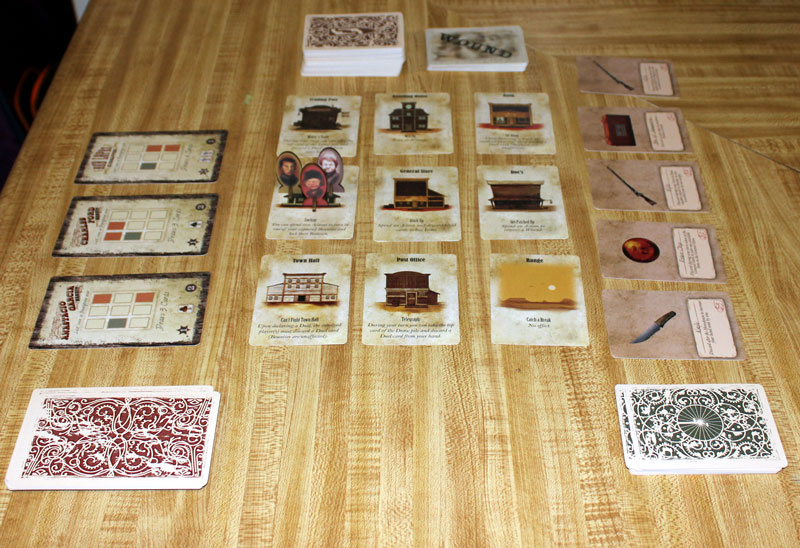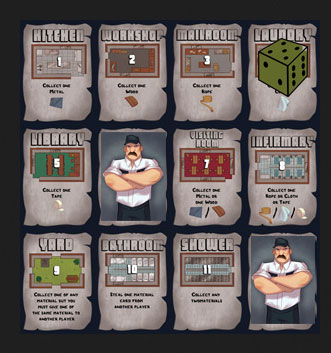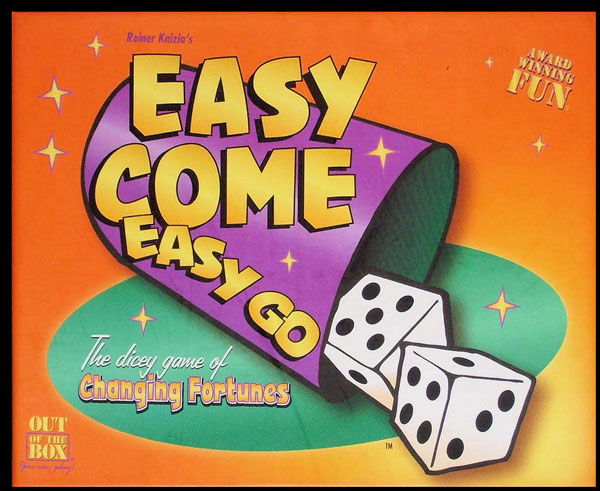Review: Bountytown (Victory Point Games)
 Friday, July 24, 2015 at 03:56AM
Friday, July 24, 2015 at 03:56AM Review: Bountytown from Victory Point Games
Designed by: Kyle Van Winkle Michael Huven-Moore
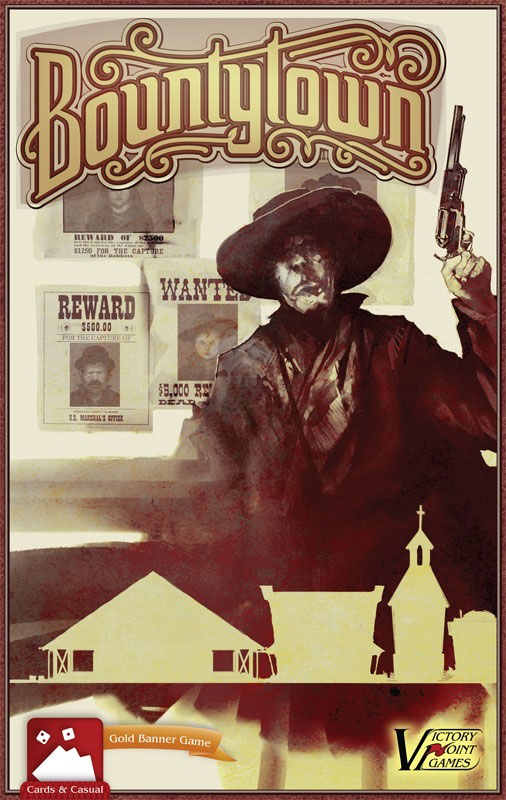
In their own words: “three to six players take on the roles of unique characters in the Wild West, dueling bounties and each other in a race to build up the most Renown in Bountytown.”
Components: Around 150 cards of various sizes and 15 character standees. The cards are high-quality and shuffle well. The standees are well-printed with great art design. They would work better if the two parts are glued together, but then they wouldn’t fit in the box, so they are a bit fiddly. That said, they are attractive on the table and a vast improvement both aesthetically and in their usability over plastic pawns.
Game Play: Before play begins, players set up a semi-random group of locations to represent Bountytown for that game. They then randomly choose the bounties for the game and shuffle a game-ending Train card into the last five cards of the Bounty Deck. During the game, players move their tokens around the town either to use a location’s special function or to hunt down a bounty (or, occasionally another player).
When the player attempts to capture a bounty, the game becomes a one-hand game of poker. Using the cards in hand (and, for some characters, extra cards drawn for the fight), a player attempts to put together his or her best poker hand. The bounty’s best hand is then formed by drawing cards, adding the cards printed on the bounty, and putting together the highest ranked hand possible. (Note: the deck uses five rather than four suits. The fifth suit is “coins” which are also used to buy items. Deciding whether to use coins in the poker hand can be difficult if a cool, but expensive, item is on the board.) If the player has the better hand, they capture the bounty which earns them renown.
Bounties that haven’t been turned over to the sheriff are not safe as any other player with less renown can come to that player’s location and initiate a duel, which works much like the duel with bounties, but involves a match between the two players and the bounty. If the attacker wins the duel, he or she steals the bounty; if the defender wins the duel, he or she keeps the bounty, but if the outlaw wins the hand, he escapes.
In both types of duels, players who lose gain Wound cards which take up slots in the player’s hands and limit the player’s ability to put together winning hands in the future.
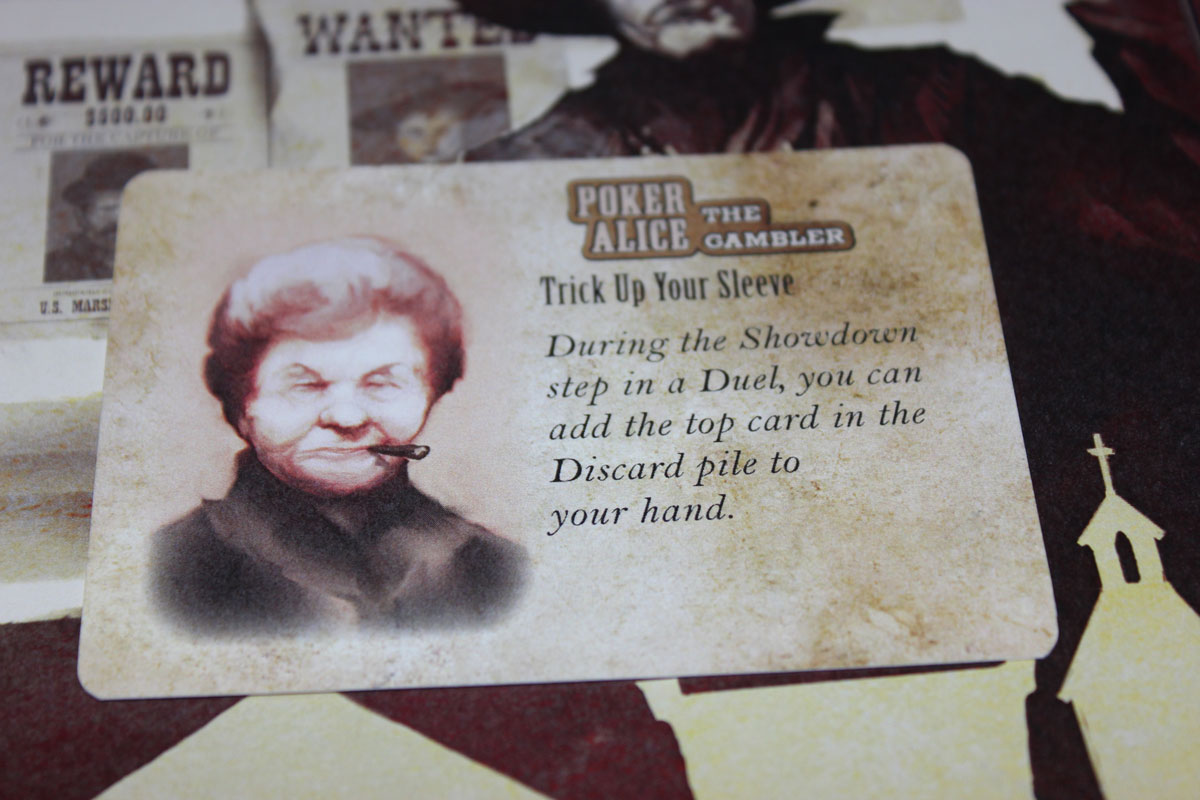
The locations can affect duels in various ways or provide other benefits, some of which are ongoing and others which take an action. The three non-random locations are particularly useful. The Sheriff’s Office provides a place for the players to “turn in” their bounties, locking the points in permanently and protecting them from loss from a duel. Doc’s allows players to ditch Wound cards that can clutter up their hand, and The General Store sells one-use items that can help a player win duels, capture bounties, and other good stuff.
A bounty that is captured or escapes is replaced from the Bounty deck. When the Train card is flipped up, the game is over. The player with the highest renown wins.
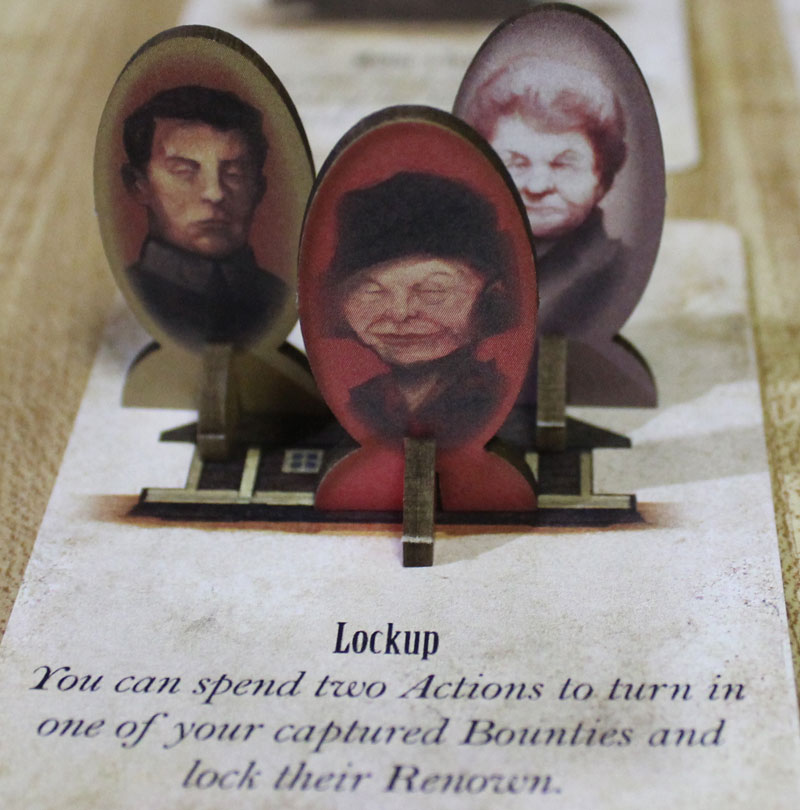
My Take: I have thoroughly enjoyed my time with Bountytown so far. The game’s mechanics fit well with its theme, and, though it isn’t unique to this game, the poker hand as resolution mechanic has long been one of my favorites and it has been put to good use here.
Not everything works as well as I’d like. I was excited about the ability to engage in player-vs-player duels, but I think the three-way nature of the duel (including the outlaw as a participant) discourages much of that happening. Theme-wise, I love the idea of the outlaw escaping because the bounty hunters were infighting, but the risk of that escape happening had us wary about risking a battle unless our hands were nigh unbeatable.
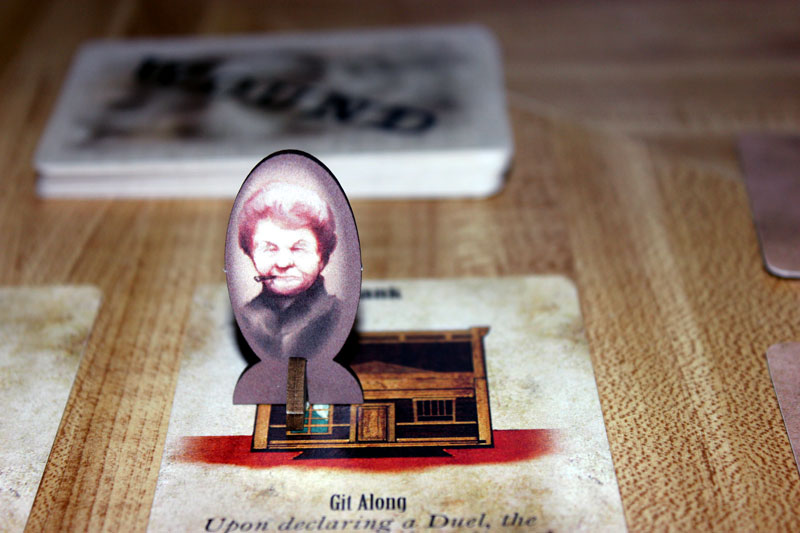
I will also say that I was a bit bothered by the game flipping the hand rankings so two pairs was better than three of a kind. I lost a couple of duels to this, and it made evaluating my hands before a discard-and-draw counter-intuitive and generally harder than it should be.
We found the character abilities to be pretty balanced in our games, but we haven’t played with enough combinations to really know how that will turn out in the long run. The fact that there is so much left to see with the game is probably is greatest strength. There are characters we haven’t used after three games, bounties we haven’t captured, locations we haven’t visited (and maybe even items we haven’t bought, but I’m not sure about that). Just the variety in locations alters player strategy from game to game and makes every game feel unique.
The theme is one that goes over well with my group, but also works with non-gamers and younger family members. Overall, I’m completely pleased with this game and fully expect it to make my most-played-games list this year.
Review Score: 4/5 (Very Good)


